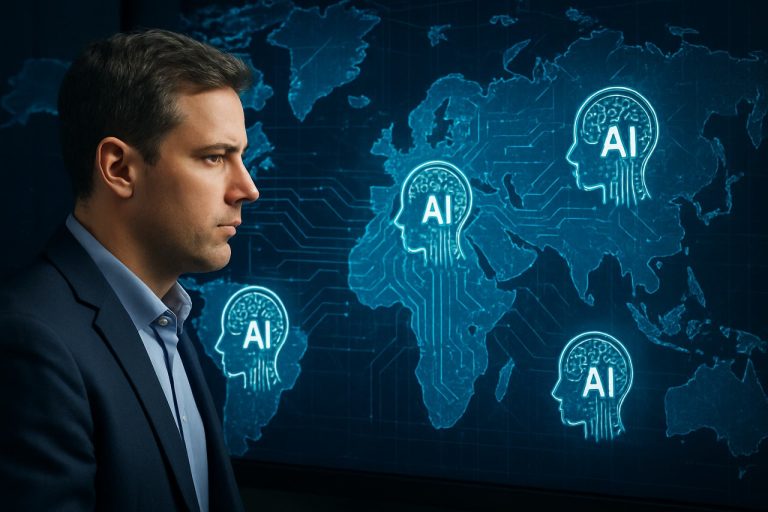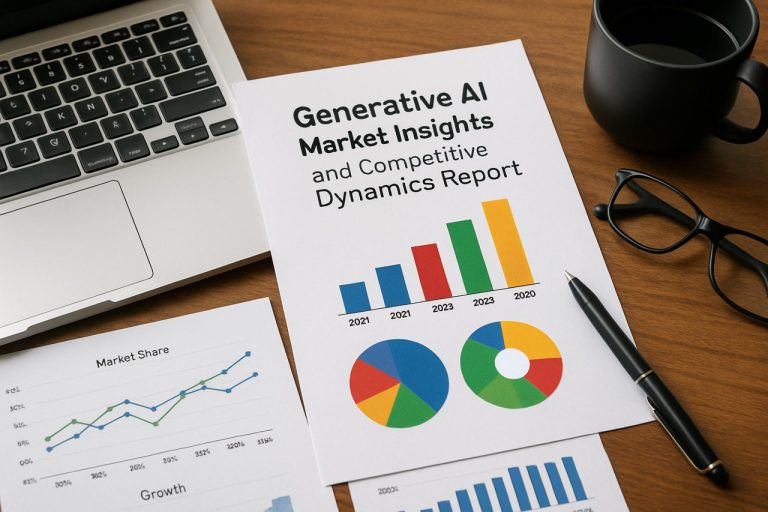
- Bittensor pioneers a decentralized AI network, challenging centralized monopolies with diverse collaboration.
- The network functions like a global neural system, with AI models working as nodes to foster collective intelligence.
- The Yuma Consensus ensures integrity by evaluating AI contributions, upholding fairness and transparency.
- Bittensor’s subnets are specialized ecosystems driving innovation, exemplified by their focus on tasks like language models and digital creativity.
- The TAO token serves as the ecosystem’s currency, promoting participation through merit and innovation, akin to Bitcoin.
- The absence of central gatekeepers in Bittensor advocates for transparency and free exchange of knowledge.
- Bittensor represents a new era in AI development, emphasizing cooperation and open access over exclusive control.
Amidst the digital expanse where artificial intelligence shapes new realities, Bittensor emerges as a pioneer, crafting a decentralized AI frontier that challenges monopolistic giants and reshapes governance. Picture a bustling virtual bazaar where AI models congregate, eager to trade insights and innovations, and fueled by the TAO token, their currency in the race for artificial supremacy.
Bittensor’s Vision: A Symphony of Minds
At its core, Bittensor orchestrates a global neural network—an intricate tapestry of artificial minds learning, evolving, and intertwining as one. Unlike the monolithic AI behemoths, this decentralized network promises diversity and collaboration, mimicking nature’s evolutionarily proven methods. Here, each AI model serves as a node in an ever-expanding web, driving forward with collective intelligence.
Yuma Consensus: The Guardian of Integrity
Integrity and fair play lie at the heart of Bittensor’s ethos. The Yuma Consensus is the vigilant steward of this ecosystem, evaluating contributions with precision. Validators, the arbiters of value, assess the performance of AI miners by awarding scores that dictate reward distribution. This dynamic ensures a transparent evaluation, tightly knitted to community trust.
Subnets: The Microcosms of Specialization
Bittensor’s architecture flourishes through its subnets—distinct ecosystems tailored to specific AI tasks. Within these vibrant microcosms, AI models pit their prowess against peers, constantly refining their capabilities. Consider subnets like SN1, which strive to transcend language model limitations, or SN23, a hub for digital creativity from text to memes. Each subnet is a crucible of innovation, alive with potential and unbridled creativity.
TAO: The Lifeblood of the Ecosystem
TAO tokens are not merely digital currency; they embody the spirit of Bittensor, tying value to AI capabilities. This structure democratizes participation, akin to decentralized legends like Bitcoin. Just as miners vie for digital gold, contributors across Bittensor earn their place in the ecosystem through merit and innovation, without predistributed favoritism.
No Central Gatekeepers:
A decentralized promise safeguards against the shadows of censorship and control, offering transparency in a world where black-box algorithms often reign. By dispersing influence across a spectrum of participants, Bittensor is forging paths most centralized systems dare not tread. It stands as a testament to the belief that knowledge should flow freely, unbridled by monopolistic barriers.
Conclusion: A New Dawn
Bittensor is more than just a network; it symbolizes a renaissance in the digital age, advocating for collaboration over competition, and transparency over obscurity. In a landscape where centralized entities control narratives, this decentralized approach is not just radical but necessary. Bittensor stands ready to redefine the future of AI, where diversity fuels growth, and ingenuity paves the way for the unknown. As the world becomes ever more reliant on AI, Bittensor’s promise resonates: The collective brilliance of many is always more illuminating than the guarded knowledge of a few.
Unveiling Bittensor: The Future of Decentralized AI
Understanding Bittensor’s Decentralized AI Ecosystem
Bittensor is at the forefront of revolutionizing the AI landscape with its decentralized neural network, contrasting sharply with the centralized models of dominant tech giants. Through Bittensor, AI models can collaborate and compete in an open marketplace, exchanging insights while leveraging the TAO token as a means of value. This approach challenges traditional AI governance and promotes a more inclusive and democratic form of intelligence sharing.
How Does the Yuma Consensus Ensure Fairness?
The Yuma Consensus is central to maintaining Bittensor’s integrity. Validators evaluate AI models, awarding scores based on the performance of these entities within the network. This process not only ensures transparency but also adheres to community-driven standards. Validators effectively act as quality controllers, preventing any single entity from dominating and ensuring fair distribution of TAO tokens.
Exploring the Role of Subnets in Specialization
Bittensor’s architecture is distinguished by its subnet design, each serving as a microcosm for specialized AI tasks. These subnets allow models to focus on specific domains like language processing or digital creativity, resulting in highly refined and capable AI systems. For instance, SN1 aims to push the boundaries in natural language processing, while SN23 fosters innovation in creative domains. This specialization fosters a culture of innovation and skill enhancement.
TAO Tokens: Fueling a Collaborative Network
The TAO token is the lifeblood of Bittensor’s ecosystem, aligning value with AI contributions. Unlike traditional systems with centralized control, TAO democratizes access, allowing innovators to earn rewards based solely on merit. This system draws parallels to Bitcoin’s mining model, where value is unlocked through computational effort and ingenuity. Participants are thus incentivized to continually improve their AI models, driving the network’s evolution.
No Central Gatekeepers: A Commitment to Transparency
In an age where data control can lead to biases and censorship, Bittensor stands apart with its decentralized promise. By distributing influence among numerous participants, it mitigates the risks associated with centralized power. This ensures that AI development remains open and transparent, fostering a more egalitarian tech ecosystem where contributions are valued over control.
Future Prospects: Bittensor’s Impact on AI Governance
Bittensor is paving the way for a new era where AI development is characterized by collaboration and diversity rather than competition and centralization. This approach can potentially disrupt existing AI monopolies, offering a model that values collective progress over individual gain. The platform’s ability to harness the collective intelligence of multiple AI entities is a testament to the power of decentralized innovation in reshaping our digital future.
Comparison with Centralized AI Systems
Unlike many centralized AI frameworks, Bittensor allows greater flexibility and participation. Centralized systems often suffer from bottlenecks in innovation due to restrictive governance and closed networks. Bittensor, by contrast, offers open collaboration and innovation, potentially leading to faster advances in AI technology.
Insights & Predictions for the Future of Decentralized AI
As the decentralized AI paradigm gains traction, Bittensor could serve as a model for other sectors seeking to break free from centralized control. The rise of decentralized AI may usher in more ethical and transparent models of innovation that prioritize societal benefits over corporate profits.
Quick Tips for Engaging with Bittensor’s Network
1. Stay Informed: Engage with the community and keep abreast of subnet developments to maximize contribution potential.
2. Participate Actively: Leverage your unique skills to contribute to the network and earn rewards through the TAO token.
3. Embrace Collaboration: Focus on partnerships within the network to enhance model performance and benefit from shared insights.
As Bittensor continues to grow, it’s crucial to embrace its potential for driving future AI advancements. For further information on decentralized technologies, explore more at Bittensor.



